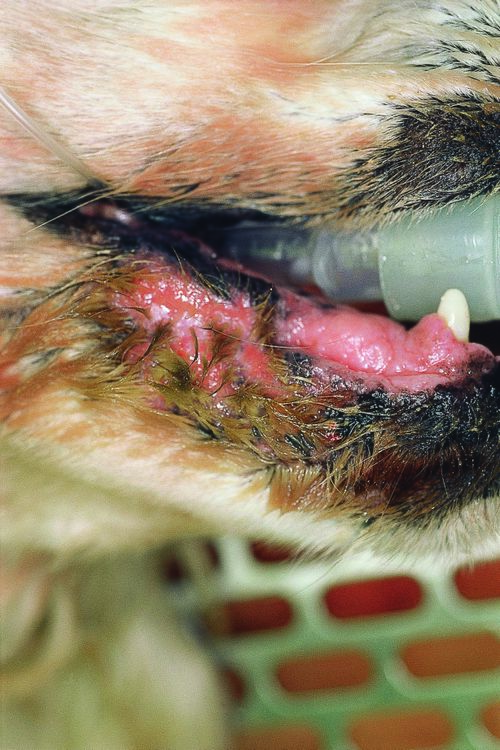Veterinary Dentistry Q&A 18
| This question was provided by Manson Publishing as part of the OVAL Project. See more Veterinary Dentistry Q&A. |
This dog was presented for treatment of periodontal disease. The owner’s primary complaint is halitosis.
| Question | Answer | Article | |
| What is the problem in this patient? | Lip fold dermatitis (pyoderma). Malodor from the mouth may be the result of halitosis secondary to oral disease or associated with skin or lip disease around the mouth. |
Link to Article | |
| Which breeds are predisposed to developing this problem? | Dogs with excessive mandibular labial tissue are commonly affected and there is a breed predisposition in Cocker Spaniels, Springer Spaniels, St. Bernards, and Irish Setters. Lip fold or skin fold dermatitis may also occur following partial mandibulectomy or maxillectomy if skin or lip folds are created during wound closure. |
Link to Article | |
| What dental disease may be associated with this problem? | Increased plaque accumulation on teeth adjacent to the lip/skin folds may enhance the development of more severe gingivitis/periodontitis. |
Link to Article | |
| What are the treatment recommendations for this problem? | Medical treatment involves twice-daily cleaning, for 10–14 days, of the area with a benzoyl peroxide shampoo, followed by drying the area (manually or with a mild astringent), and topical application of a benzoyl peroxide gel. Cases with severe inflammation may benefit from an initial few days of topical antibiotic/steroid cream or systemic antiinflammatory/ antibiotic administration. Unless surgically corrected, the dermatitis tends to become chronic. Benzoyl peroxide gel is applied as needed for prevention and is aimed at controlling the inflammation and preventing recurrences. Lip fold excision (cheiloplasty) should be considered in severe cases. |
Link to Article | |
